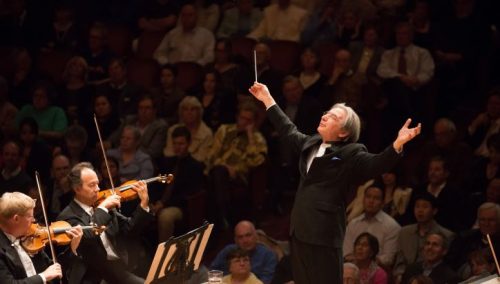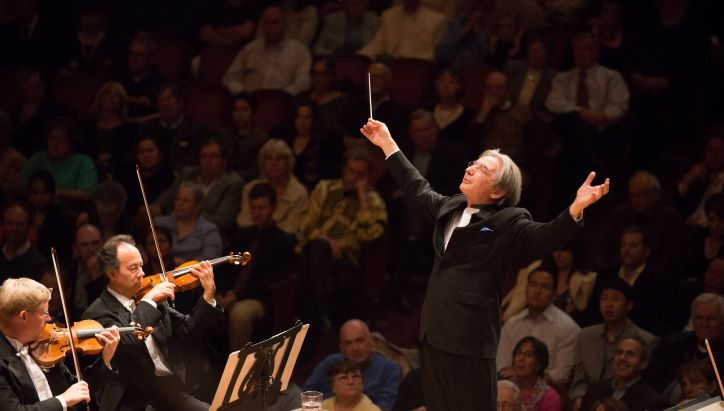 United States Mahler: San Francisco Symphony / Michael Tilson Thomas (conductor), Davies Symphony Hall, San Francisco. 14.6.2019. (HS)
United States Mahler: San Francisco Symphony / Michael Tilson Thomas (conductor), Davies Symphony Hall, San Francisco. 14.6.2019. (HS)

Mahler — Symphony No.9 in D major
Any Mahler symphony comes with a sense of occasion, and the 90 minutes of the Ninth are no exception, especially when the conductor is leading his last concerts before taking an unexpected medical leave.
Earlier this spring, music director Michael Tilson Thomas canceled a couple of assignments with the San Francisco Symphony, and announced a few weeks back that he is taking the summer off from his conducting commitments to undergo long-delayed heart surgery. He canceled scheduled appearances later in June with this orchestra and other assignments on tour, until the fall season opens — his 25th and final in San Francisco. (After June 2020 he passes the baton to Esa-Pekka Salonen.)
All this necessarily elevated the emotional aura a few notches, not least because Mahler’s last completed work (finished in late 1909) carries overtones of death and departure. Leonard Bernstein famously characterized the hesitant rhythm of the opening measures as the composer’s own irregular heartbeat. And he thought the slow unfolding of the richly textured finale, fading to a heart-tugging finish, as a premonition of the composer’s own death. Mahler’s heart finally gave way in 1911, while he was still at work on the Tenth Symphony. The Ninth premiered posthumously in 1912.
Since his debut as a guest conductor in 1974, Tilson Thomas’s way with Mahler has been a connecting thread of his tenure with this orchestra. Every time the conductor turned to Mahler, he found new angles and insights. This time, improbably, he managed to make the supposedly elegiac fourth movement into a hymn of hope, a musical balm. Make what you will of these final concerts of his penultimate season as music director. The emotional buildup since his announcement was palpable.
One aspect of Tilson Thomas’s approach has been a steadfast conviction that the composer knew what he was doing, and the music needed no smoothing-over or tweaking to make it less jolting than it looks on the page. If anything, this conductor revels in the score’s contradictions and sudden turns — its contrasts between the mundane and the sublime. And since the orchestra has absorbed all this into its bones, in this performance, the musicians responded to these shifts with immediacy.
In the opening measures, an uncertain tread was a signal to let new ideas interrupt any constant flow. Instead of turning a corner to find a new phrase, the next twist of the kaleidoscope revealed new patterns. It was disconcerting at first, like bumping into a wall at every turn, but it highlighted the wealth of Mahler’s ideas and compositional mastery. The movement ended with a gradual fade away to a quiet, unsettled finish.
The second movement took off in a new direction. The thumping, stomping Ländler, a German peasant dance, introduced a sense of defiance. The quasi-waltz at the center of the movement stopped short of elegance, too, and the reprise of the dance made an abrupt ending. There was plenty of nervous energy in the third movement, too. Marked in the score as a ‘burleske’, the layered rondo took on all the fierceness once could want.
After all this restlessness, the final 25 minutes found sublime legato playing, rich textures from the strings at both extremes of their range, and a steady pulse at the core that allowed the memories of previous heard themes and gestures to make their marks without sinking into despondency. This clear-eyed execution of suppleness and deftness tugged at the heart and, ultimately, created an aura suffused with hope. It was gorgeous, recalling church hymns and autumnal music that developed organically and seamlessly, a remarkable refutation of the earlier movements’ nervous nature.
It was almost as if Tilson Thomas were telling us, ‘Don’t despair, I’ll be back. There is much more for us to do’.
Harvey Steiman
